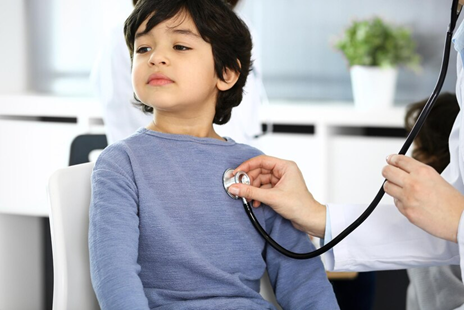Pediatric hypertension, or high blood pressure in children, is a growing concern. It is diagnosed when a child’s blood pressure readings are consistently at or above the 95th percentile for their age, sex, and height across multiple visits. As awareness of this condition increases, parents should be informed about the causes, symptoms, and management of pediatric hypertension.
What is Hypertension in Children?
Hypertension is a condition characterized by sustained high blood pressure, meaning that blood pressure remains elevated over time. For children, normal blood pressure varies by age, height, and gender. A diagnosis of pediatric hypertension is made when blood pressure is above the 95th percentile for a child’s specific group on three separate visits.
Do Children Get Hypertension?
Yes, and it is becoming more common. Over the last few decades, pediatric hypertension has increased significantly. Obesity plays a significant role in the rising cases of pediatric hypertension.
What Causes Pediatric Hypertension?
In younger children, hypertension is often secondary to another medical condition, such as kidney disease, heart problems, or hormonal imbalances. Older children, especially those who are overweight, are more likely to develop primary hypertension, which occurs without an underlying condition.
Contributing factors include obesity, poor diet (high in salt), sedentary lifestyle, and family history of high blood pressure.
How Do I Know if My Child Has Hypertension?
High blood pressure in children usually does not present with noticeable symptoms, which is why regular monitoring is crucial. Blood pressure should be checked during routine check-ups starting at age 3. If a child’s blood pressure is consistently high, further testing and monitoring are recommended.
Symptoms that could indicate a hypertensive emergency include headaches, chest pain, seizures, and rapid heartbeats. If these symptoms occur, seek emergency medical care immediately.
Does Weight Affect My Child’s Blood Pressure?
Yes, being overweight or obese is a major risk factor for pediatric hypertension. Children who are overweight are more likely to have high blood pressure, along with other conditions such as high cholesterol, diabetes, and heart problems. This is why promoting a heart-healthy lifestyle is essential for preventing and managing hypertension in children.
How is Pediatric Hypertension Treated?
For children with slightly elevated blood pressure (stage 1 hypertension), lifestyle changes such as a low-sodium, heart-healthy diet and increased physical activity are often the first line of treatment.
Encouraging children to engage in 60 minutes of physical activity daily and reducing salt intake can help control blood pressure.
For children with more severe hypertension (stage 2 hypertension) or underlying health conditions, medication may be necessary to control blood pressure.
Common medications include ACE inhibitors, calcium channel blockers, and diuretics.
How Can I Prevent Hypertension in My Child?
Preventing hypertension involves promoting a healthy lifestyle from a young age. This includes maintaining a healthy weight, ensuring a balanced diet low in salt, engaging in regular physical activity, and avoiding smoking or exposure to secondhand smoke. Regular blood pressure monitoring is also key, especially if there is a family history of hypertension or other risk factors like obesity.
Pediatric hypertension is a rising concern, particularly with the increasing prevalence of obesity among children. Early diagnosis and treatment, whether through lifestyle changes or medication, are essential for managing high blood pressure in children and preventing long-term health complications.


